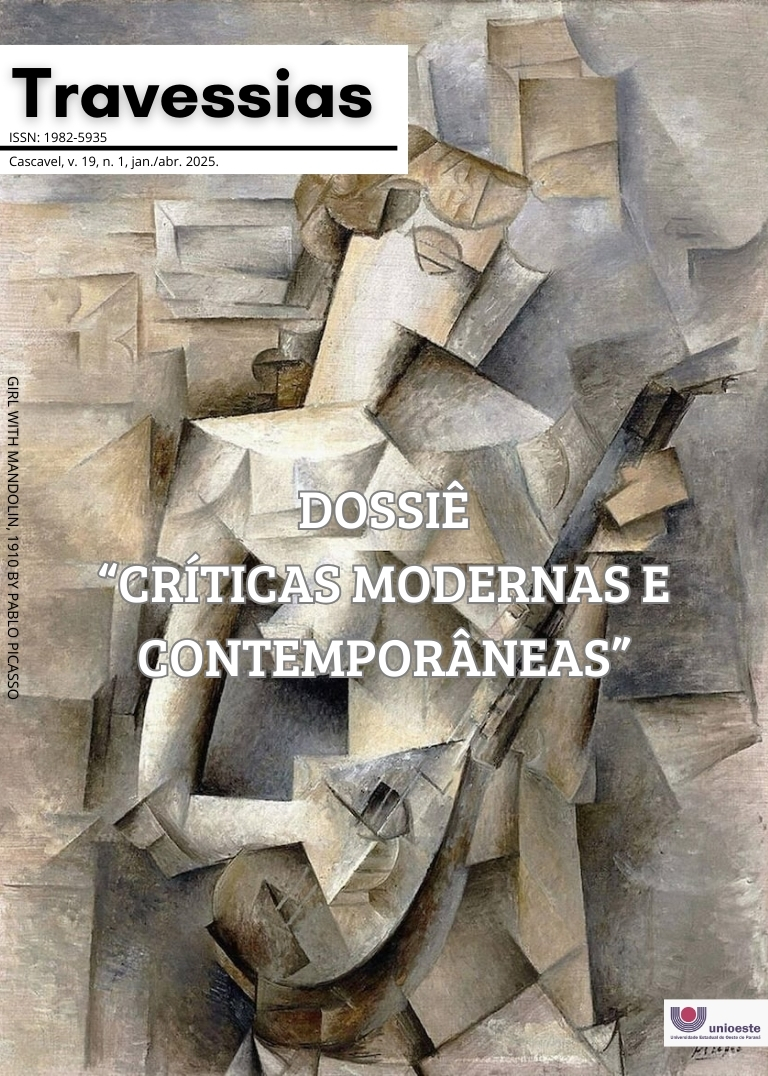Aspectos lexicogramaticais em anúncios publicitários do McDia Feliz
uma abordagem sistêmico-funcional
DOI:
https://doi.org/10.48075/rt.v19i1.34969Palavras-chave:
LSF, Metafunções da linguagem, Anúncios publicitáriosResumo
A linguagem é um sistema de comunicação que permite aos seres humanos expressarem ideias, emoções, pensamentos e informações. Assim, ela é fundamental para entender como as pessoas interagem, como as línguas evoluem e como elas afetam a sociedade e a cultura. Pensando assim, o presente artigo tem o objetivo de analisar como as metafunções, ou funções, da linguagem, a saber, ideacional, interpessoal e textual, contribuem para a construção de sentidos em anúncios publicitários do McDia Feliz, da Mcdonald’s. Para tanto, são utilizados os pressupostos teóricos da Linguística Sistêmico-Funcional – LSF, respaldados em Halliday (1994) e Halliday e Matthiessen (2004). Metodologicamente, este trabalho é de caráter descritivo-analítico e sua abordagem é qualitativa. Para a constituição do corpus, foram selecionados dois anúncios publicitários veiculados no Instagram do Méqui (@mcdonalds_br), e a escolha de analisar esse anúncio pelo viés sistêmico da linguagem deve-se, principalmente, ao fato de esses textos terem várias funções, dentre as quais, atrair e convencer os consumidores a adquirirem ou aderirem ao que está sendo anunciado. Nesse sentido, os resultados apontam que os aspectos lexicogramaticais ideacionais, interpessoais e textuais são produzidos e organizados pela publicidade, a fim de persuadir o leitor, e as publicações na rede social, no Instagram do Méqui, apresentam realizações linguísticas que induzem os consumidores a consumirem o produto, proporcionando uma experiência positiva, compartilhada e solidária, culminando, portanto, no objetivo central da empresa, a vendo do produto anunciado.
Downloads
Referências
BUTT, D.; FAHEY, R.; FEEZ, S.; SPINKS, S. Using functional grammar: an explorer‟s guide. Sydney: Macquarie University, 2001.
FUZER, C.; CABRAL, S. R. S. Introdução à Gramática Sistêmico-Funcional em Língua Portuguesa. Santa Maria: UFMS, 2014.
FURTADO DA CUNHA, M. A.; SOUZA, M. M. Transitividade e seus contextos de uso. Rio de Janeiro: Lucerna, 2007.
GOUVEIA, C. A. M. Texto e gramática: uma introdução à Linguística Sistêmico-Funcional. Revista Matraga, Rio de Janeiro, v. 16, n. 24, jan./jun., p. 13-47, 2009. Disponível em: https://www.e-publicacoes.uerj.br/matraga/article/view/27795. Acesso em: 21 fev. 2025.
HALLIDAY, M. A. K. An Introduction to Functional Grammar. London: Edward Arnold Publishers, 1994.
HALLIDAY, M. A.K.; MATTHIESSEN, C. Introduction to Functional Grammar. London e New York: Routledge, 2004.
MARTIN, J. R.; MATTHIESSEN, C. M. I. M.; PAINTER, C. Working with functional grammar. Edward Arnold, 1997.
PAIVA, Vera Lúcia Menezes de Oliveira e. Manual de pesquisa em estudos linguísticos. 1. ed. São Paulo, Parábola, 2019.
SANTOS, F. R. S. Construção do conhecimento em textos acadêmicos da área de linguística: um estudo sistêmico-funcional. 2022. 152 p. Tese (Doutorado em Letras) – Universidade do Estado do Rio Grande do Norte (UERN), Pau dos Ferros/RN, 2022.
SANTOS DE SOUZA, A. P. Um estudo da modalidade nas falas de trabalhadores de engenhos de cana-de-açúcar e casas de farinha do alto oeste potiguar. 2024. 585 p. Tese (Doutorado em Letras) – Universidade do Estado do Rio Grande do Norte (UERN), Pau dos Ferros/RN, 2024.
Downloads
Publicado
Como Citar
Edição
Seção
Licença
Copyright (c) 2025 Autores mantêm os direitos autorais e concedem à revista o direito de primeira publicação, com o trabalho simultaneamente licenciado sob CC-BY-NC-SA 4.0 que permite o compartilhamento do trabalho com indicação da autoria e publicação inicial nesta revista

Este trabalho está licenciado sob uma licença Creative Commons Attribution-NonCommercial-ShareAlike 4.0 International License.
Aviso de Direito Autoral Creative Commons
Política para Periódicos de Acesso Livre
Autores que publicam nesta revista concordam com os seguintes termos:
1. Autores mantêm os direitos autorais e concedem à revista o direito de primeira publicação, com o trabalho simultaneamente licenciado sob a Licença Creative Commons Attribution que permite o compartilhamento do trabalho com reconhecimento da autoria e publicação inicial nesta revista.
2. Autores têm autorização para assumir contratos adicionais separadamente, para distribuição não-exclusiva da versão do trabalho publicada nesta revista (ex.: publicar em repositório institucional ou como capítulo de livro), com reconhecimento de autoria e publicação inicial nesta revista.
3. Autores têm permissão e são estimulados a publicar e distribuir seu trabalho online (ex.: em repositórios institucionais ou na sua página pessoal) a qualquer ponto antes ou durante o processo editorial, já que isso pode gerar alterações produtivas, bem como aumentar o impacto e a citação do trabalho publicado (Veja O Efeito do Acesso Livre).
Licença Creative Commons
Esta obra está licenciada com uma Licença Creative Commons Atribuição-NãoComercial-CompartilhaIgual 4.0 Internacional, o que permite compartilhar, copiar, distribuir, exibir, reproduzir, a totalidade ou partes desde que não tenha objetivo comercial e sejam citados os autores e a fonte.



